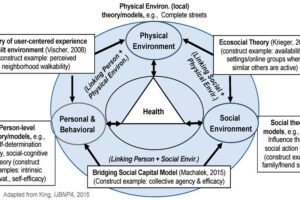
Q6. (a) The urbanisation process is particularly pronounced in Asia and Africa, where too many urban residents grapple with extreme poverty, exclusion, vulnerability and marginalisation. Discuss. 20 Marks (PYQ/2024)
Answer:
Introduction
Urbanization in Asia and Africa has accelerated rapidly over the past few decades. While cities across these continents act as centers for economic growth and opportunities, the rapid influx of migrants from rural areas has often outpaced the capacity of urban infrastructure and services. This imbalance has resulted in vast segments of the urban population grappling with extreme poverty, exclusion, vulnerability, and marginalization.


Urbanization Trends in Asia and Africa
- Rapid Rural–Urban Migration: Many Asian and African countries have experienced high rates of rural–urban migration as people search for improved livelihoods. Cities like Mumbai, Dhaka, Lagos, and Nairobi have expanded dramatically, often in an unplanned manner.
- Informal Settlements: A significant share of these new urban residents live in informal settlements or slums, where basic amenities such as clean water, sanitation, and secure housing are largely absent. For example, Dharavi in Mumbai and Kibera in Nairobi are emblematic of these challenges.
- Economic Polarization: While cities attract investment and modernization in certain sectors, the resulting growth is uneven. The high-skilled, modern service sectors typically benefit a small proportion, whereas the majority of migrants work in the informal economy with insecure, low-paying jobs.
Challenges: Poverty, Exclusion, Vulnerability, and Marginalization
- Extreme Poverty and Inadequate Infrastructure: Rapid urbanization without corresponding expansion in infrastructure often results in denser slums, where residents lack basic services, secure tenure, and reliable employment. Extreme poverty in these areas is compounded by limited opportunities for upward social mobility.
- Social Exclusion and Marginalization: Urban processes sometimes reinforce social inequalities. Marginalized groups—including women, ethnic minorities, and migrants—tend to be confined to peripheral, neglected areas. Such spatial segregation limits their access to quality education, health services, and formal employment.
- Vulnerability to Environmental and Economic Shocks: Informal settlements are typically located in hazardous zones (e.g., floodplains, unstable slopes), making residents highly vulnerable to climate change and natural disasters. Economic shocks, such as sudden job losses in the informal sector, further exacerbate urban poverty.
- Governance and Policy Shortfalls: Many governments in Asia and Africa struggle with adequate urban planning, governance, and policy implementation. Rapid expansion often overwhelms municipal systems, leading to inconsistent service delivery and unsustainable urban growth.
Theoretical Perspectives
- Urban Political Ecology: This framework examines the intersection of social inequality, environmental degradation, and urban planning. Scholars, such as Eric Sheppard and Gert Middel, argue that marginalization within cities is not merely a by-product of rapid urban growth but a result of deliberate policy choices that privilege certain sectors over others.
- Modernization Theory vs. Dependency Theory: Modernization theory suggests that urban growth is an inevitable and positive marker of development; however, dependency theory counterargues that external influences, global capital flows, and trade imbalances contribute to persistent urban poverty and marginalization in developing regions.
- Chicago School and Social Disorganization: Early urban sociologists noted that rapid, unplanned urban growth tends to fragment community social networks, leading to disorganization, crime, and further exclusion—factors that are still evident in many contemporary Asian and African cities.
Case Studies & Examples
- Case Study 1: Mumbai, India Mumbai’s rapid urban expansion has given rise to vast slum areas, with Dharavi being one of the largest informal settlements in Asia. Despite the city’s role as an economic powerhouse, nearly half of its residents live in precarious conditions, lacking proper sanitation, education, and health services. Recent initiatives focused on community-based upgrading projects attempt to bridge these gaps, though challenges remain.
- Case Study 2: Lagos, Nigeria Lagos is experiencing explosive growth with a population that exceeds 20 million. The disparity between the modern business districts and the sprawling slums like Makoko highlights deep economic polarization. Policies aimed at improving infrastructure and creating affordable housing are underway, but the pace of urbanization continues to outstrip public policy responses.
Conclusion
Urbanization in Asia and Africa encapsulates both the promise of economic dynamism and the perils of unplanned, inequitable growth. The extreme poverty, exclusion, vulnerability, and marginalization experienced by many urban residents are deeply intertwined with rapid migration, inadequate infrastructure, uneven economic development, and governance challenges. Addressing these issues requires integrative policies that incorporate socio-economic strategies, robust urban planning, and inclusive governance to ensure that the benefits of urban growth reach all segments of society.
Tag:Geography Case Study, Geography Optional, geography optional case study, Geography Optional Pyq, geography optional pyq 2024, human geography, inequal urbanization, inequality in urbanization, models theories laws and perspective in geography, Urbanization, urbanization process in asia and africa


